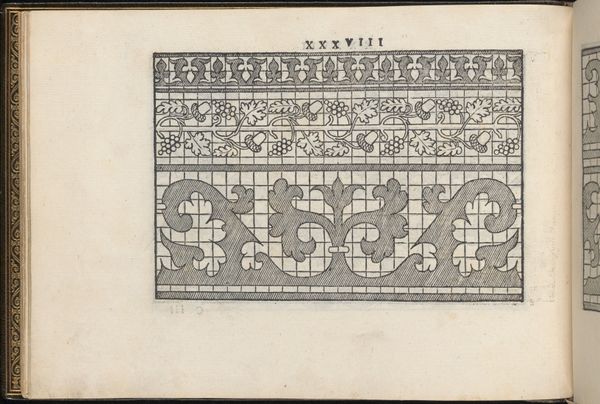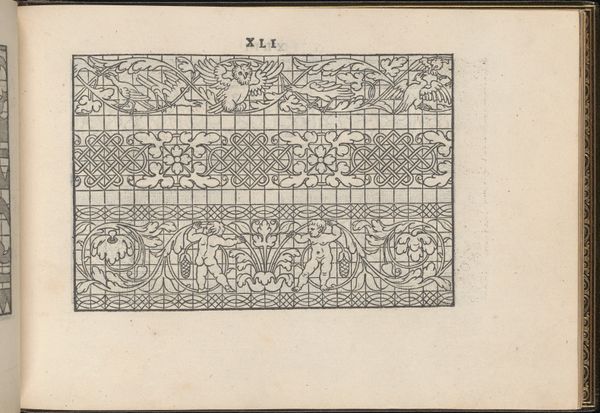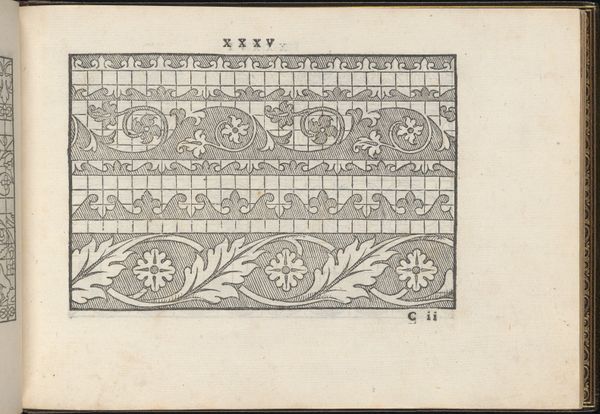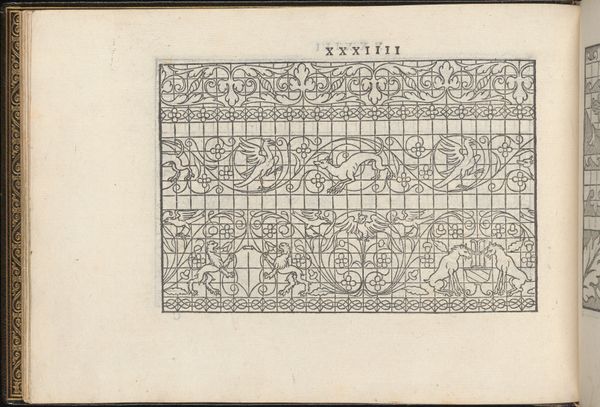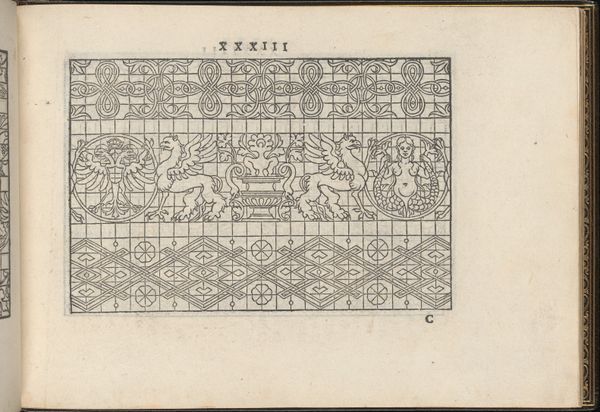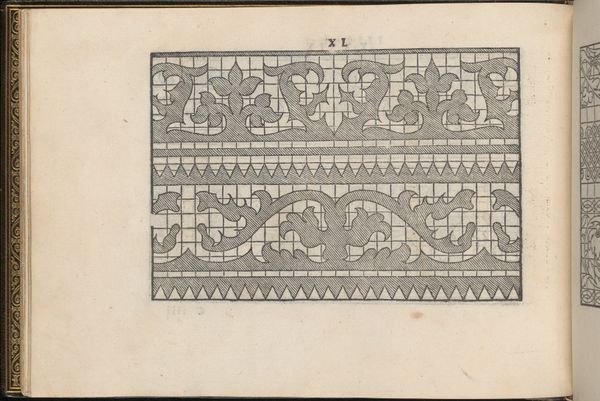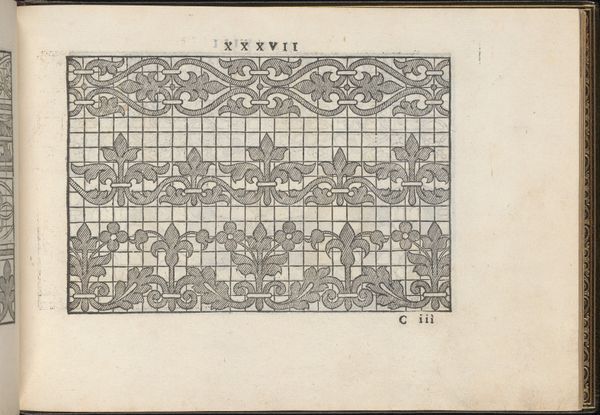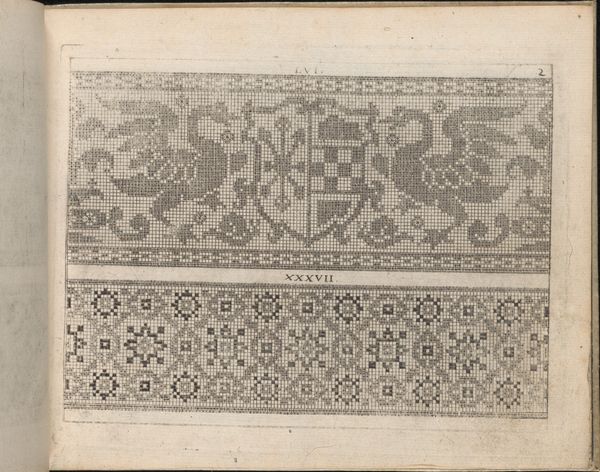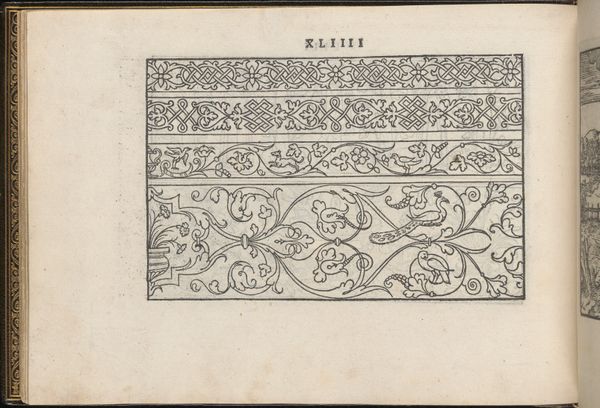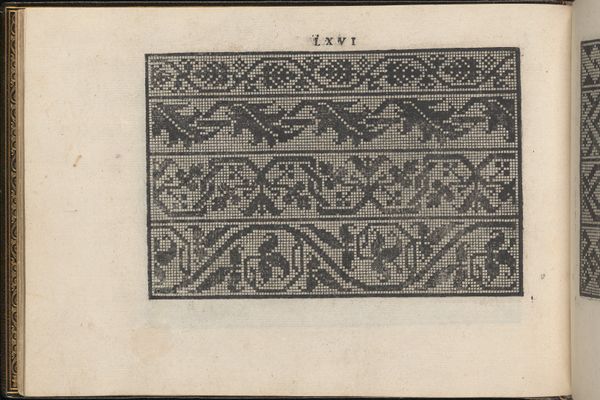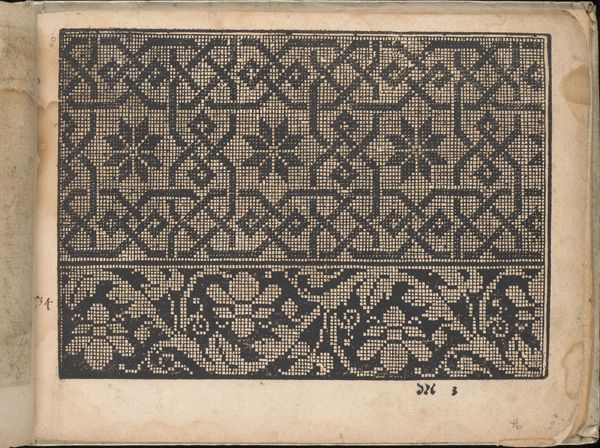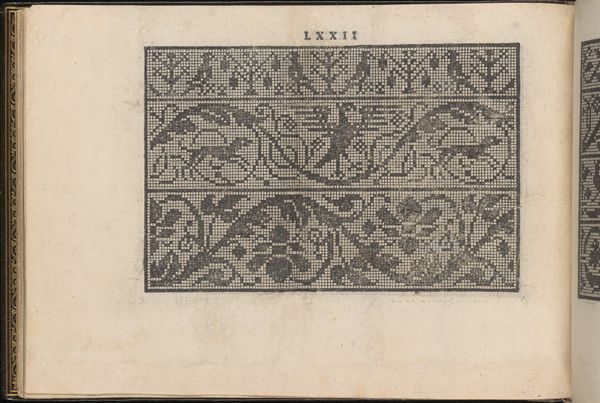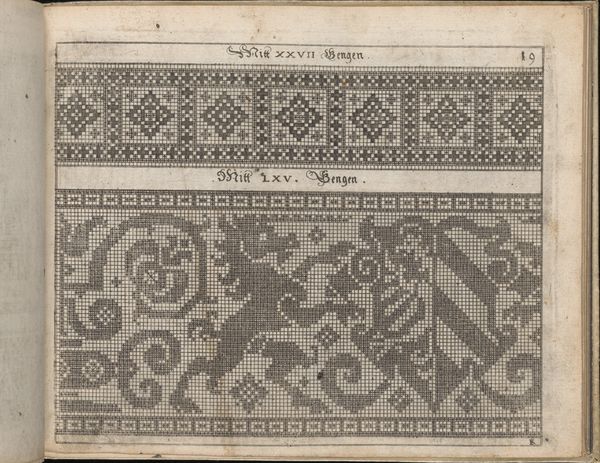
La Vera Perfettione del Disegno di varie sorti di recami, page 18 (verso) 1567
0:00
0:00
drawing, print, engraving
#
drawing
# print
#
geometric
#
line
#
engraving
Dimensions: Overall: 6 5/16 x 8 7/16 in. (16 x 21.5 cm)
Copyright: Public Domain
This is page 18 from Giovanni Ostaus's "La Vera Perfettione del Disegno," a book of embroidery patterns published in Venice, Italy. During the 16th century, books like these played a crucial role in shaping domestic arts and defining feminine accomplishments. These patterns weren’t just about aesthetics, they were deeply embedded in the social fabric. Embroidery was a skill through which women expressed their identities, social status, and creativity within the confines of their roles. The geometric precision and floral motifs seen here reflect the era’s fascination with order and nature. They served as templates for textiles that adorned homes and clothing, signifying wealth and taste. Consider how each stitch held the potential to reinforce or subvert conventional representations of women. While the craft was often celebrated, it also confined women to the domestic sphere. These patterns, therefore, exist at the intersection of artistry, gender, and societal expectations. They prompt us to consider how creative expression is interwoven with cultural constraints.
Comments
No comments
Be the first to comment and join the conversation on the ultimate creative platform.
